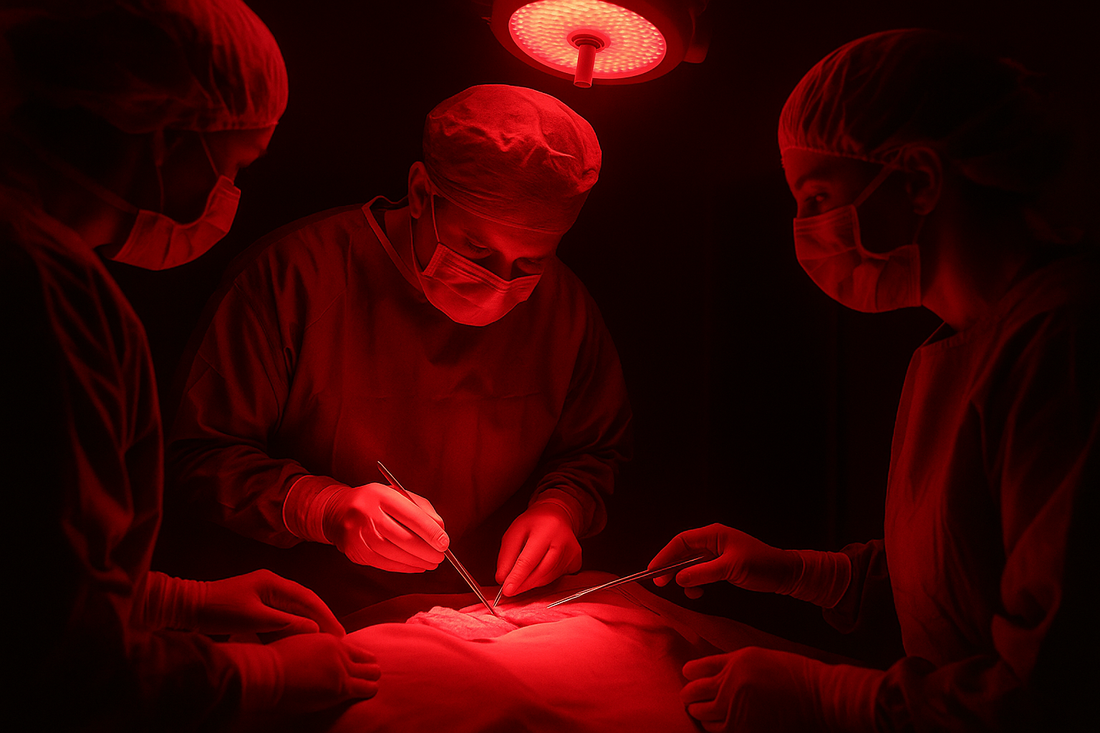Red light therapy indeed has gained popularity in the skincare and wellness community for its purported benefits. Its ability to stimulate collagen and elastin production can potentially improve skin texture, reduce fine lines and wrinkles, and even out skin tone. Plus, its noninvasive nature makes it appealing to those seeking alternative skincare solutions without the risks associated with more invasive procedures.
It's fascinating how technology is increasingly intersecting with skincare, offering innovative solutions that harness the power of light to promote skin health. With endorsements from celebrities and dermatologists alike, red light therapy seems poised to become a staple in many people's skincare routines.

Benefits of Red Light Therapy
The benefits of red light therapy are grounded in scientific principles, “As gimmicky as these devices may seem, and seemed to me at first, the technology and science behind them are sound,” says board-certified dermatologists Dr. Luke Maxfield. He underscores the credibility of the technology, affirming its efficacy in inducing biological responses within the skin through photobiomodulation. This process, facilitated by light emitting diodes (LEDs) in close proximity to the skin, enables the penetration of specific wavelengths of light.
Different wavelengths correspond to distinct colors, each offering unique advantages. Alongside red light therapy, which is notable for its ability to deeply penetrate the skin due to its longer wavelength, other colors such as blue, yellow, green, and near-infrared are utilized in light therapy. Blue light targets surface-level bacteria implicated in acne, while near-infrared light reaches the deepest layers of the skin. Notably, red and blue light therapies are commonly employed to address concerns including acne, wrinkles, and scarring.
“By improving cellular function, red light therapy has been shown to increase the production of collagen [and] help with skin tone and texture as well as fine lines and wrinkles,” explains Dr. Tiffany J. Libby, board-certified dermatologist and director of Mohs micrographic and dermatologic surgery at Brown University. “Studies also show improvement in acne by calming redness and inflammation.”
Dr. Libby further expounds on the therapeutic benefits of red light therapy, emphasizing its capacity to enhance cellular function, particularly in bolstering collagen production. This stimulation of collagen synthesis contributes to improvements in skin tone, texture, and elasticity, thereby ameliorating fine lines and wrinkles. Moreover, research suggests that red light therapy exhibits anti-inflammatory properties, rendering it effective in mitigating symptoms of acne by attenuating redness and inflammation.
Risks of red light therapy
While red light therapy is generally considered safe and noninvasive, it's crucial to ensure that the intensity of light utilized remains within appropriate parameters. Most at-home devices come with specific instructions regarding the frequency and duration of light exposure, but consulting a dermatologist for guidance is advisable, especially if there are any concerns.
Following red light therapy, it's important to avoid harsh treatments immediately afterward, and to maintain regular use of sunscreen to protect the skin from UV radiation, as the therapy may temporarily increase sensitivity to sunlight.
Dr. Brandith Irwin, a board-certified dermatologist, emphasizes the importance of using red light therapy at an appropriate level to avoid potential skin damage. While low-level home devices are generally considered safe, there is a very small possibility of exacerbating pigment issues. Dr. Irwin suggests monitoring your skin for signs of stress and discontinuing use if there are no discernible improvements after a period of consistent application.






